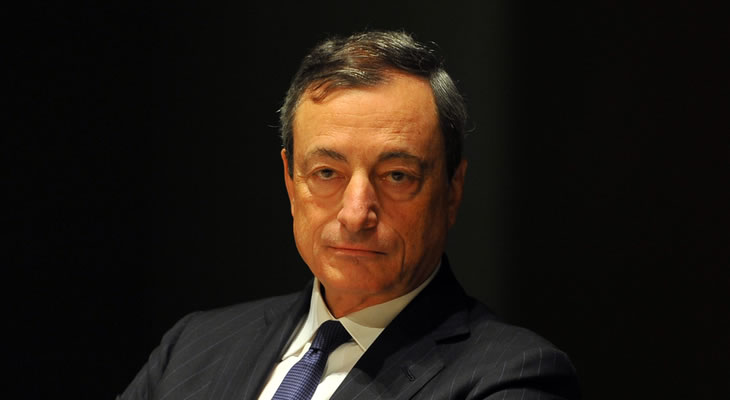The long-term Pound Euro exchange rate forecast could depend upon whether interest rates rise first in the UK or the Eurozone.
Strong Economic Fundamentals Boost Pound Euro Exchange Rate
The monetary policy situation in both the UK and the Eurozone has changed somewhat in recent months.
A vote to leave the European Union triggered a sharp devaluation in the Pound Euro exchange rate, which is currently nearly 15 cents (-11.3%) lower than just before the referendum. This is despite several strong periods of recovery, which has lifted GBP EUR from its October low of 1.10, following a mysterious ‘flash crash’.
This weakening of Sterling has served to dramatically increase inflationary pressures, with recent manufacturing data from Markit showing the fastest rate of input prices since the PMI survey began.
Consumer price growth has leapt up from between 0.3%-0.6% before the referendum to 1.6% in December. This puts it close to the Bank of England’s (BoE) target of 2%. Coupled with strong economic data in the form of robust PMIs and above-forecast GDP growth in the final quarter of 2016, could this prompt the Monetary Policy Committee (MPC) to consider a hike?
The two key aspects here are the attitude of policymakers and what the data itself says. Investors have been disappointed more than once since the referendum after assuming the above-forecast data would prompt monetary tightening from Threadneedle Street.
The BoE argued that the modest recovery in Sterling from its post-referendum lows would curb inflationary growth and therefore make it less likely that price pressures would overheat. The latest Inflation Report further disappointed, as it only showed an upwards revision for the current quarter’s projections of 0.2%, suggesting the MPC still doesn’t view inflation as a serious threat, even though the latest consumer price indices have advanced significantly above forecast.
Overall, it seems the BoE is still resistant to the idea of lifting rates from their historic lows, although the latest meeting minutes saw the Bank reiterate that;
‘There are limits to the extent that above-target inflation can be tolerated. The continuing suitability of the current policy stance depends on the trade-off between above-target inflation and slack in the economy.’
We’ve seen before that investors have anticipated a hike despite the BoE warning that it would look past strong inflation figures to the underlying fundamentals. So it is likely that, even if the MPC remains firmly against the idea of tightening policy, investors will be somewhat hopeful, which could provide some support for the Pound Euro exchange rate, providing data continues to largely print strongly.
Euro Kept Soft as Mario Draghi Attributes Rising Inflation to Crude Oil Prices

The Eurozone has seen a strong uptick in inflation over the past couple of months. Price growth has accelerated from deflation in the first quarter of last year to 1.8% in January; not far from double the rate seen in December, which itself was nearly double that of November. Germany, considered the Eurozone’s powerhouse economy, has seen inflation rise from an average of 0.3% in 2016 H2 to 1.7% by the end of the year and 1.9% in January.
However, core inflation – which strips out volatile energy and food prices – has remained stuck around the 0.9% average rate seen throughout 2016. German core inflation, while now trending at a high not seen since mid-2014 of 1.49%, only represents a small uptick on the average level of price growth.
The strong inflation data had boosted the Euro as investors thought it might spur the European Central Bank (ECB) to think about winding back some of its enormous monetary stimulus measures. ECB President Mario Draghi quickly took the wind out of those sails, as he often does, after attributing the rise in price growth to volatility in the crude oil markets.
The Organisation of the Petroleum Exporting Countries (OPEC) recently agreed to unilaterally cut oil production in order to stimulate market price growth. This has significantly raised the cost of energy generation and consumption, therefore making inflation look, on the face of it, like it is accelerating. The core values show that price growth hasn’t been anywhere near as fierce.
As long as Draghi continues to look for underlying price pressures, the Euro could remain weak. As Capital Economics Chief European Economist Jennifer McKeown explains;
‘There are several hawks on the ECB council who are bound to point to these numbers as an indication that the ECB shouldn’t be continuing its policy support, certainly shouldn’t continue buying such large quantities of assets right until the end of the year. But I think the consensus will be to continue to look through these increases. They are largely energy-related.’
Interbank Pound Euro Exchange Rates

The Pound Euro exchange rate was trending around 1.16 at the time of writing, with the Euro Pound exchange rate in the region of 0.86.
The GBP EUR exchange rate relative strength indicators (RSI) were trending around 61. A score of 50 is considered ‘fair value’ – i.e. the rate at which the currencies should be exchanged in order to account for the differences in prices between the two nations in question.
Above 50 suggests the base currency (in this case Pound Sterling) is stronger than it should be, with a score of 70 or above considered a clear sign that the currency is too strong. At 61, this suggests GBP EUR is above fair value, although with a long way to go until the 70 mark, this could indicate that the pairing has further room to go before a downwards correction happens.
Additionally, the fact that the outlook for UK monetary policy seems more positive than Eurozone policy suggests there could be further upside potential for the Pound Euro exchange rate.


Comments are closed.